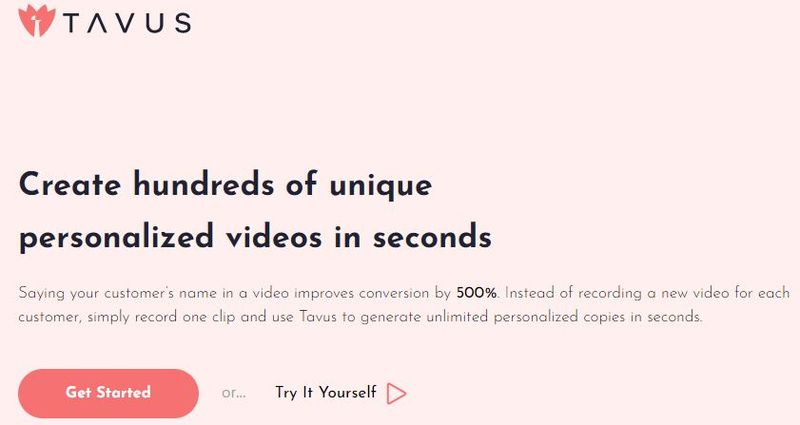In specific situations, it is necessary to record more than one explanatory video, greeting or message, differentiated only by the greeting and a couple of minor aspects.
For cases like this, deepfake technology can help. It would be enough to film oneself speaking once and then edit the script and submit the material to the relevant treatment, which basically consists of editing the voice and images of the clip. An AI-based application offers an easy way to accomplish this task.
With Tavus you can effortlessly generate your own deepfakes
Videos are such a wide-ranging format that the examples cited at the beginning might not be enough to illustrate the potential use cases for such a tool.
The dynamics of using Tavus are not very different from what is known in other deepfakes generators. However, despite being a paid tool, it offers a free customizable demo, in which you can modify some parameters of two predefined templates, with customized values.
Following the logic of the example, they offer, through this platform it is possible to generate deepfakes based on your own videos, thanks to the benefits of artificial intelligence.

As a resource applicable to many professional fields and commercial activities, Tavus can be used as a tool for creating personalized videos, sending the same message with a different greeting for each recipient, for example.
In terms of personalization, the recorded videos can be displayed with a website or background image, and the avatar built based on the voice and appearance of the person operating the tool can be kept to be used more than once.
In addition, another tool that facilitates the production of batches of different videos is the presence of the Tavus API, which allows to send requests from external services and further automate the generation of these clips, whose file can be consulted from a dedicated panel on the platform and exported as a CSV file.
Much has been said about the dangers associated with deepfake content. And although the circulation of material is tendentiously altered in order to confuse, tools like this one show us that with a good vision, we can take advantage of this technology for the treatment of audiovisual content.
If you want to know more about Tavus, you can find additional information on its website.




